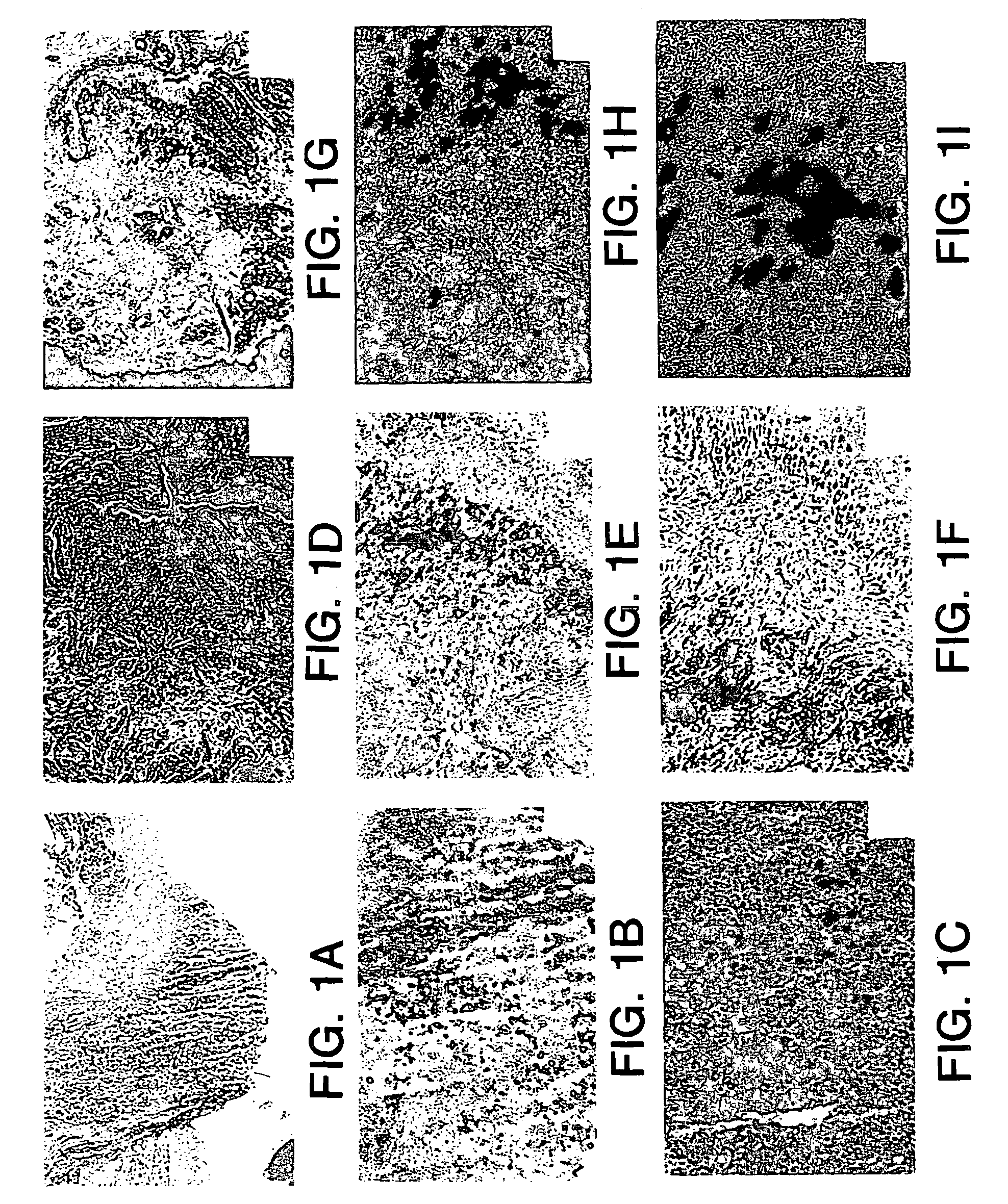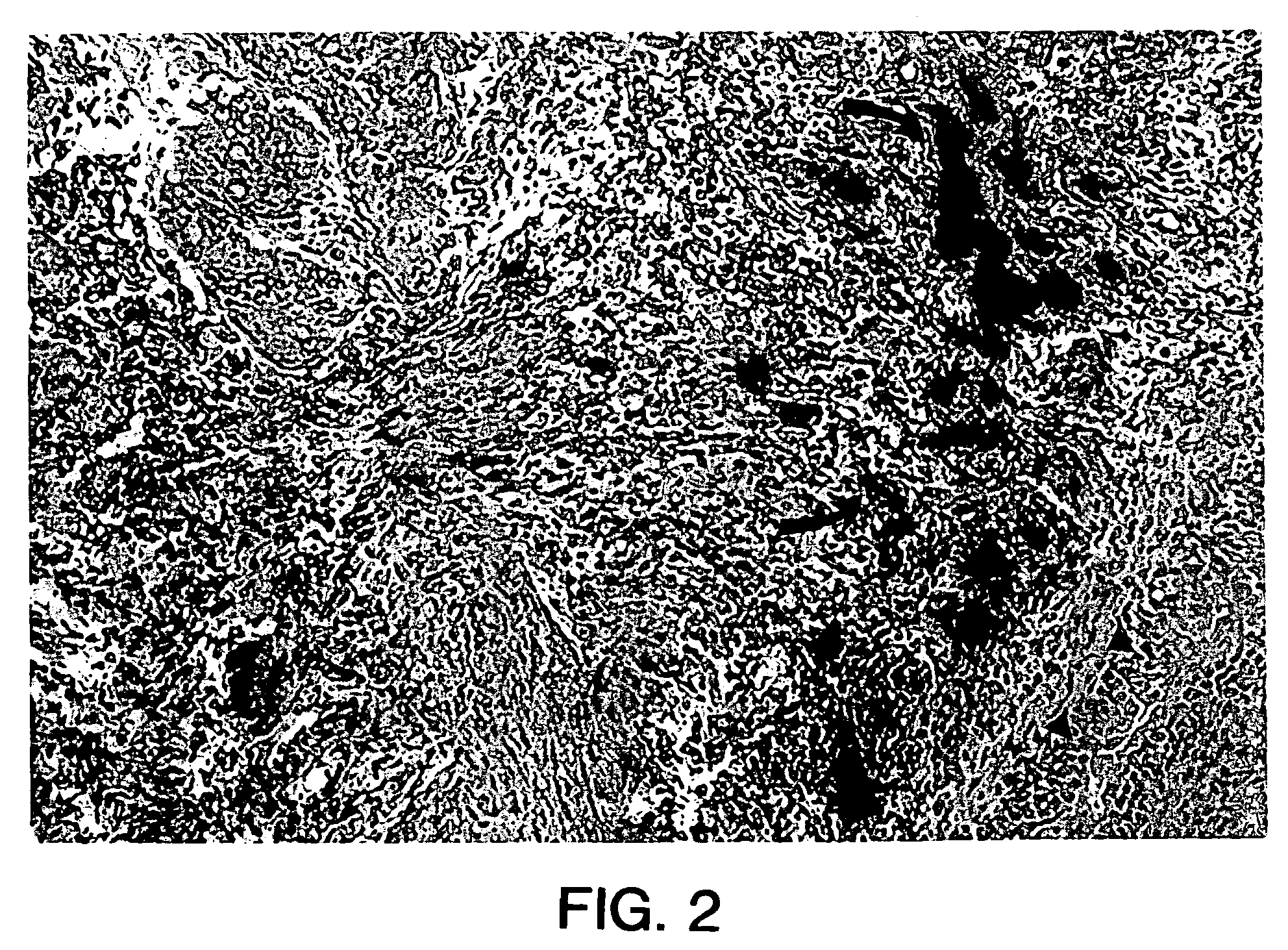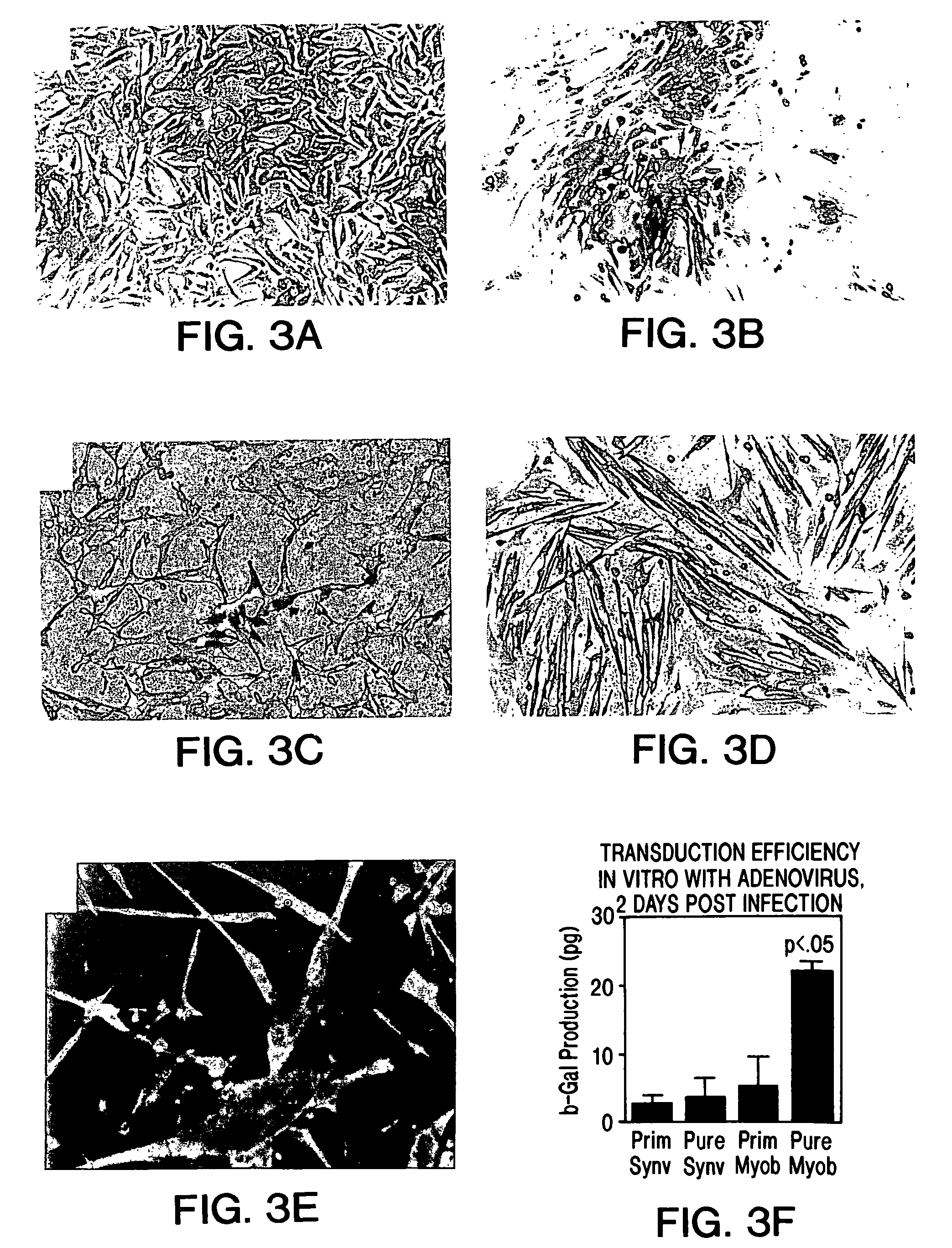Muscle-derived cells (MDCs) for treating muscle- or bone-related injury or dysfunction
a technology of muscle- or bone-related injury or dysfunction, which is applied in the field of myogenic or muscle-derived cells, can solve the problems of affecting the delivery of such quantities of protein, affecting the effect of urethra wall bulking, and general undetectable agents, etc., and achieves the effect of large bulking
- Summary
- Abstract
- Description
- Claims
- Application Information
AI Technical Summary
Benefits of technology
Problems solved by technology
Method used
Image
Examples
example 1
Materials and Methods:
[0109]The materials and methods described in Example 1 pertain to the description of the invention and the other examples as set forth hereinbelow.
[0110]Animals and Myoblast Injection: Adult Sprague Dawley (S.D.) female rats (Hilltop Laboratories, Pittsburgh, Pa.), weighing approximately 250 g were used in the experiments described. Only certified viral free animals were used. The animals were housed in an approved viral gene therapy P-2 facility at the University of Pittsburgh Medical Center. Strict adherence to P-2 protocol was followed. The animals were anesthetized with pentobarbital (50 mg / kg) for myoblast harvesting, myoblast injection, and during measurement of bladder pressure.
[0111]After surgical preparation, a low midline incision was made to expose the bladder and proximal urethra. During injection using a Hamilton syringe, 10-20 microliter (μl) of myoblast suspension (approximately 1-2×106 cells per 10 μl) were injected into the bladder or dorsal pr...
example 2
[0158]Experiments were performed using myoblast injection into the urethral wall as a treatment for stress urinary incontinence.
[0159]In these experiments, myoblasts from the GH8 myoblast cell line (available from the American Type Cell Culture depository) transduced with an adenoviral vector harboring a reporter gene encoding β-galactosidase (E1-E3 deleted first generation adenovirus), were cultured and injected into the proximal urethral wall of the female S.D. rat.
[0160]In addition, the cells were incubated with fluorescent latex microspheres (FLM) to follow the fate of the injected cells (see Example 1). The transduced, FLM-labeled cells were injected into adult female S.D. rats (n=20). A midline incision was made and myoblasts were injected into the proximal urethral wall at two sites with a 10 μl Hamilton micro syringe. The myoblast concentration ranged from 1.33×105 to 1×106. The tissue was harvested 2-4 days after injection and flash frozen in liquid nitrogen. The tissue was...
example 3
[0169]Experiments were performed to demonstrate the feasibility of myoblast injection into the bladder wall to improve detrusor contractility. A myoblast cell line transduced with an adenovirus vector carrying a β-galactosidase reporter gene as described hereinabove was used for these experiments. The cells were incubated with fluorescent latex microspheres (FLM) to follow the fate of the injected cells. Cells were injected into adult male and female S.D. rats (n=18). The myoblasts were injected into the dome of the bladder and into the right and left lateral walls near the dome with a 10 μl Hamilton microsyringe. The myoblast concentration ranged from 1.33×105 to 1×106 cells. The tissue was harvested after 2-5 days, sectioned and assayed for β-galactosidase expression. For gene therapy experiments, myoblasts were transduced with the adenovirus containing the human inducible nitric oxide synthase (iNOS) gene at a multiplicity of infection of 50 (MOI=50) and were injected into the bl...
PUM
| Property | Measurement | Unit |
|---|---|---|
| diameter | aaaaa | aaaaa |
| volume | aaaaa | aaaaa |
| tension | aaaaa | aaaaa |
Abstract
Description
Claims
Application Information
 Login to View More
Login to View More - R&D
- Intellectual Property
- Life Sciences
- Materials
- Tech Scout
- Unparalleled Data Quality
- Higher Quality Content
- 60% Fewer Hallucinations
Browse by: Latest US Patents, China's latest patents, Technical Efficacy Thesaurus, Application Domain, Technology Topic, Popular Technical Reports.
© 2025 PatSnap. All rights reserved.Legal|Privacy policy|Modern Slavery Act Transparency Statement|Sitemap|About US| Contact US: help@patsnap.com



